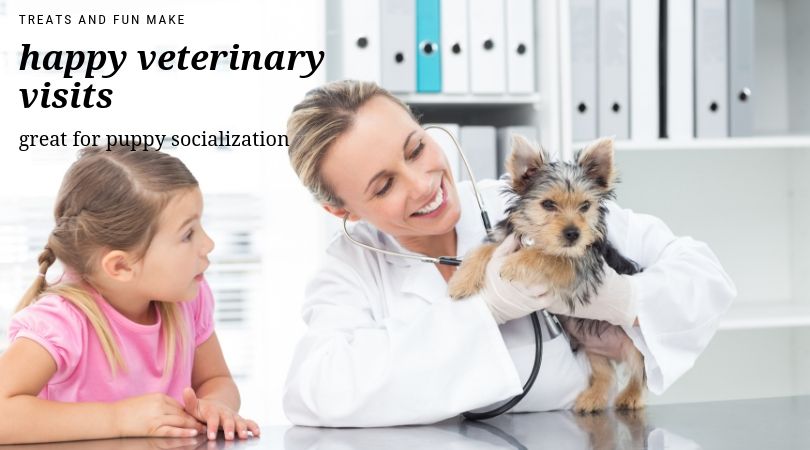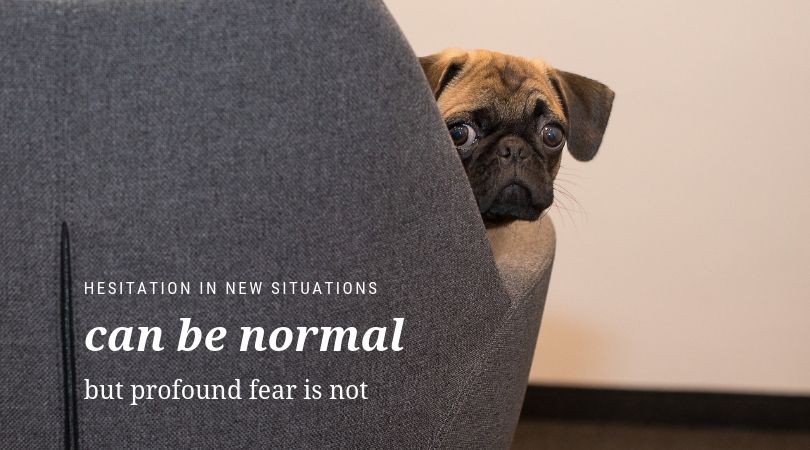Appropriate socialization in the first few months of life is critical for healthy social development of puppies. Proper exposure to new places and people can reduce the incidence of fear-based behavior problems later in the dog’s life. Let’s look at how and why you should socialize your new puppy!
How Do I Socialize a Puppy?
Expose the puppy, in a non-fearful manner, to all people, places, objects, and animals that you want her to be comfortable with later. Remember that when socializing your puppy to new things, it is not enough to have just neutral interactions. The interaction should be very positive, so you should carry treats wherever you go to reinforce that the child, bearded man, person with a hat, vacuum cleaner, etc., is a wonderful thing, and good things happen when they are around.
Puppy Classes
Exposure to strangers and new dogs can easily be done through a well-run puppy class. These are encouraged for all puppies; however, some puppies are timid or fearful and these classes can be quite overwhelming for them. A trainer should be able to recognize this and counsel you on the best options for your puppy. A very fearful experience during this sensitive window of development can have long-lasting consequences.
Happy Veterinary Visits

Socialization also includes socializing your puppy to veterinary visits. Happy visits, when you come in just to have us feed treats and love on your puppy, can go a long way toward alleviating her fears about coming to the veterinary clinic. Having treats on hand can help you create a positive experience for your puppy. Bring something delicious with you for us to feed her.
Another important part of veterinary visits is planning interactions that are safe for your new puppy, based on which vaccination, testing, and preventive product milestones have been met. This planning can vary depending on your puppy's age, breed, and size; on your family and activity level; and even on the time of year. Be sure to follow the veterinarian's instructions carefully during your puppy's series of exam and booster visits!
Interactions with Other Dogs
Friendly interactions with other dogs during this time period are also very important. Avoid uncontrolled situations like dog parks and the beach. Set up playdates with friendly adult dogs or other puppies.
Keep Up the Good Work!
There is a second “fear period” that occurs anywhere between 4 months and one year. During this time, early socialization can be lost so effort should be made to continue repeated safe exposure for a full year. Some typical puppy behaviors resolve with social maturity which occurs between 1-3 years.
What Behaviors Can a Puppy Exhibit if not Properly Socialized?
Some behaviors are red flags, and if not addressed can actually worsen and lead to aggression with social maturity. Aggressive and fearful behavior, such as growling, snapping, biting, stiffening, hair raising, alarm barking, and cowering in response to people or other dogs are not normal behaviors in puppies. Mild hesitation in approaching unfamiliar objects, people, or other dogs is normal, but profound fear is not. If the puppy does not recover within a very short period, tries repeatedly to escape, or refuses treats, she is exhibiting fear.

After a dog reaches social maturity (typically between 1-3 years of age), these problems are likely to worsen significantly, potentially progressing to aggression or anxiety, and can be difficult to change. Unfortunately, many people do not see the seriousness of these type of behaviors in puppyhood because biting begins much later at social maturity. Most aggression issues in adult dogs are fear-based, not dominance-based.
Fear-based issues are preventable in most dogs with careful socialization and behavior modification techniques when young. Puppyhood is the time to deal with these behaviors, build their confidence, and set them up for success.
